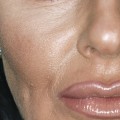Botulinum toxins are naturally occurring substances found in contaminated soil and food. In large doses, they can cause botulism, a serious nervous system disorder that affects breathing. To ensure safety and effectiveness, Botox is produced in a laboratory, where technicians dilute and sterilize the botulinum toxin. Botox is also used to treat overactive bladder in patients who cannot tolerate the side effects of other medications.
However, there are some possible interactions between botulinum toxin and drugs that can modify the final effect of injections and cause unexpected complications. These benign side effects are localized, reversible, and self-limiting, usually disappearing without treatment within a few days of injection. For people who need facial animation for their job, such as actors or broadcasters, these effects can have negative professional consequences. Cosmetic treatments of cervical wrinkles and lines require higher doses of botulinum toxin and increase the risk of serious side effects.
Diplopia and transient strabismus are well-documented side effects of botulinum toxin injections in the lateral periorbital area. Acetylcholinesterase inhibitors, prescribed for patients with myasthenia gravis, act as toxin antagonists and can reduce the effect of botulinum toxin. Lower doses of botulinum toxin seem to be necessary to achieve a successful outcome and prevent systemic side effects. The U.
S. Food and Drug Administration (FDA) describes adverse effects as serious if they meet strict criteria. In addition, there are no serious adverse effects in patients who regularly repeat botulinum toxin injections for cosmetic indications (Table). Anaphylactic shock is another source of serious side effects due to widespread diffusion.
The objective of this study was to provide an overview of possible complications and side effects that may arise after cosmetic use of botulinum toxin and to recommend possible management and prevention strategies. In addition to the risk of anaphylactic shock, long-term use may cause muscle fibrosis after several years, although this has not yet been demonstrated in shorter follow-up periods. This manifestation may be an effect of alterations between botulinum toxin and nerve endings in nerve-rich skin areas. Previous facial plastic surgery can also increase the risk of serious side effects related to botulinum toxin due to changes in anatomy.
Most people begin to see an effect after a few days to 2 weeks, and the effect usually lasts for 3 to 6 months.


